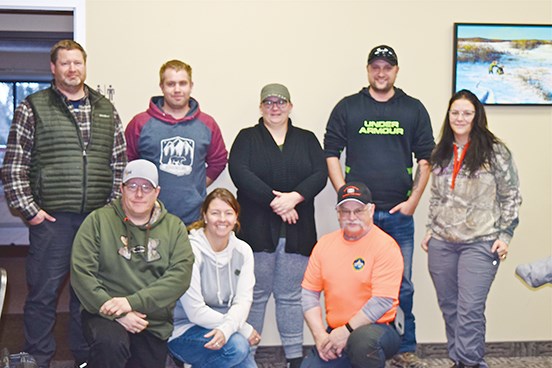The second group of volunteers has completed the basic search training and now the Southeast Saskatchewan Search and Rescue (SESK SAR) chapter has 19 qualified members, who soon will be able to partake in operation in case someone goes missing.
Lifestyles talked to one of the training participants Krista Larson, who along with Dan Harder, Alex Critikos, Tracy Ross, Cody Chorney, Monica Kovach and Pat Ross spent two back-to-back November weekends at Kenosee Lake learning about how search and rescue (SAR) volunteers act in case of emergency, how to use compasses and GPS, how to employ the active search skills, how to look for evidence and much more.
“The training was really good and really overwhelming,” said Larson.
Linda Mushanski of Wood River search and rescue and Scott Wright of Saskatoon SAR were the instructors during those weekends. Three participants were out of the Estevan area, three were from Redvers and Larson is out of White Bear. The training took 40 hours in total and came to an end with a written test.
The level of experience varied from volunteer to volunteer. Larson didn’t have a background in search and rescue besides the medical part, so for her, there was a lot of new information, and the course turned to be quite intense.
The theoretical parts of the training were intermitted with practical pieces.
“I loved the compass work. We actually got to go outside to (practise searching) and do mock searches, and just find our way and our bearings and then hone our skills,” said Larson. “I really liked the hands-on.”
The Kenosee Inn donated a room for classes and lake staff accommodations were made available for instructors and travelling participants.
The training SESK SAR members went through is approved nation-wide and is designed to provide the volunteer searchers with basic knowledge and skills. But it will take some time and experience for the members to feel completely confident in what they do. In the meantime, the Search and Rescue Saskatchewan Association of Volunteers (SARSAV), which is an umbrella organization for all the chapters throughout the province, ensures that after the new group gets the training in, they always have someone to rely on in their first steps and professional growth.
“We are just really lucky because as the new group we are not going to be just stuck up out in the field. We would be accompanied by a more experienced person,” said Larson.
If someone goes missing the three closest chapters get called out. The incident command system the SAR association uses in their work assumes that there are always more experienced and specially trained group leaders, who organize and work the small groups. And while some SESK SAR members will be achieving the further training and experience, volunteers from neighbouring chapters will be there to lead the groups and share their knowledge and skills.
Now, when the 19 SESK SAR members have completed the training, there are just a few formal steps left to be made in order for them to be able to respond to a search call.
After completing the paperwork and obtaining the basic gear, the SARSAV will activate the team adding volunteers to the list of active searchers. And when a call comes like any other SAR chapter, SESK SAR active members can only go on a search after the chapter gets activated through an authority having jurisdiction in the province, such as the RCMP, municipal police service or Parks Canada personnel.
The next groups will go into training in the late April-early May, and then in June.



